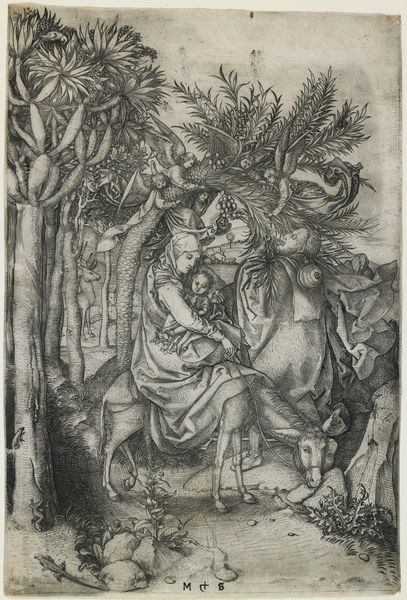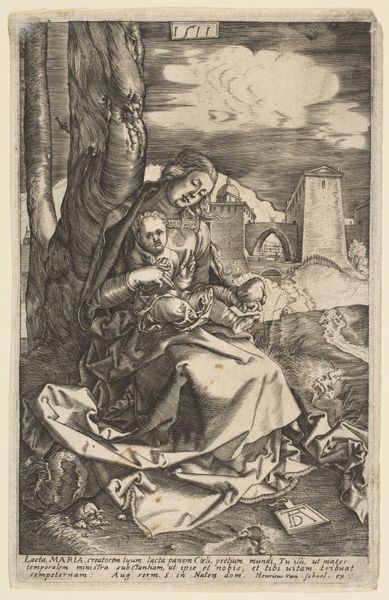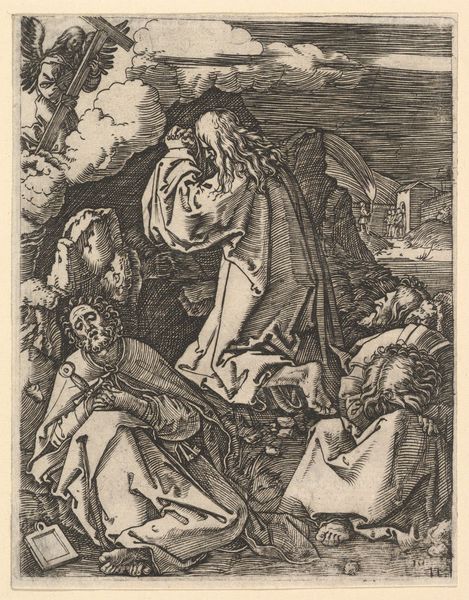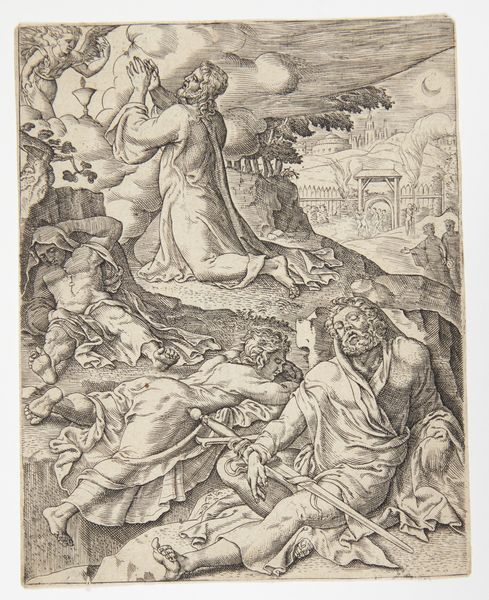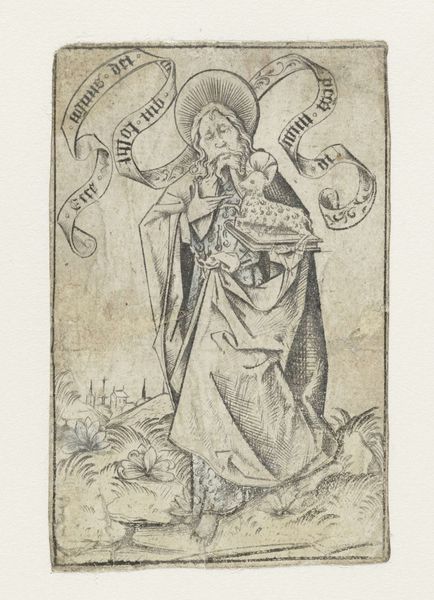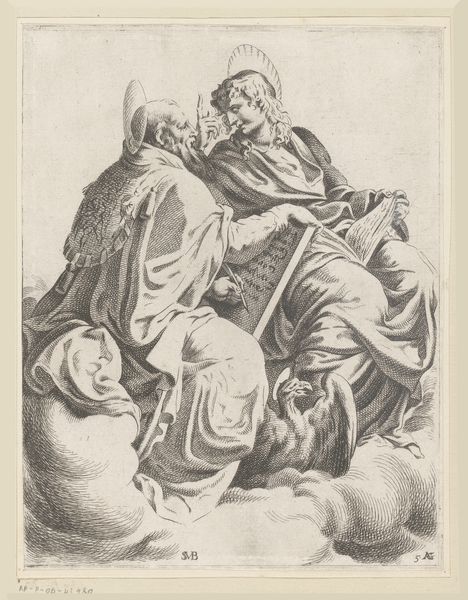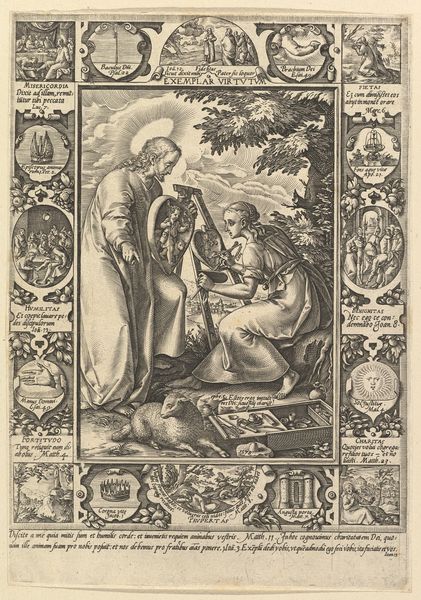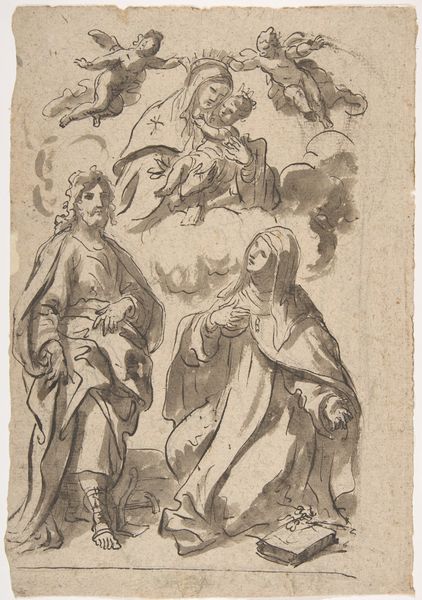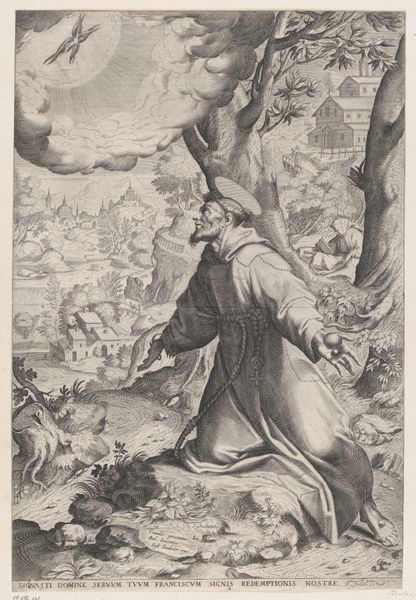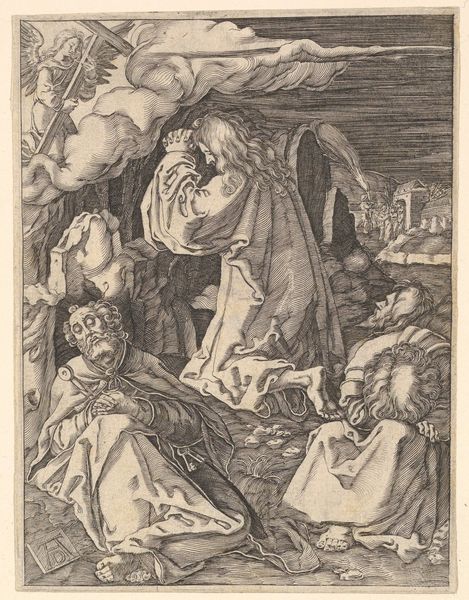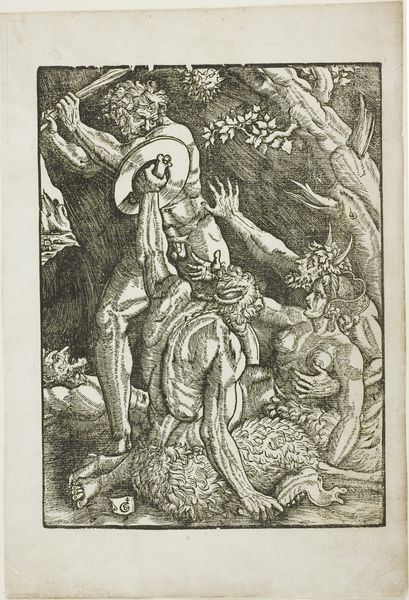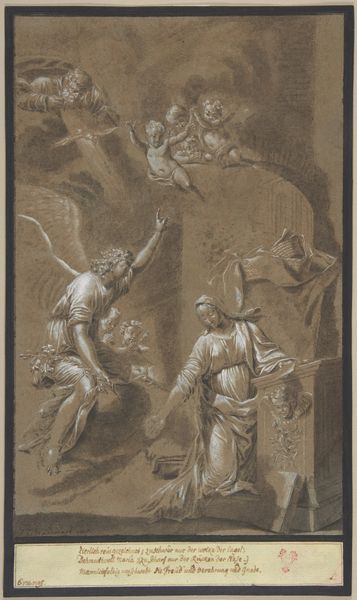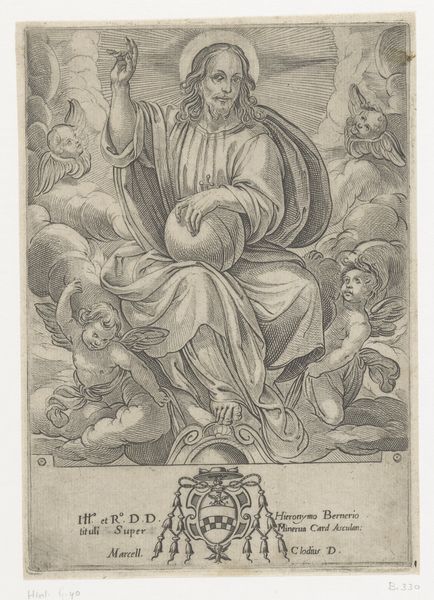
print, engraving
# print
#
landscape
#
figuration
#
11_renaissance
#
line
#
northern-renaissance
#
engraving
Dimensions: height 136 mm, width 97 mm, height 138 mm, width 100 mm
Copyright: Rijks Museum: Open Domain
Curator: This print, entitled "Christus als goede herder," or "Christ as the Good Shepherd," dates from somewhere between 1520 and 1550 and is attributed to the Monogrammist AC, who was working during the Northern Renaissance. What strikes you about it? Editor: The shepherd himself appears quite pensive and weary. It’s not the typical idyllic portrayal one might expect. He's almost melancholic, seated with the sheep, in quite a heavy scene, the light feels somber. Curator: The image certainly plays with traditional iconography. The lamb on Jesus's shoulders symbolizes his sacrifice, a powerful symbol in Christian theology, calling to mind his role as both protector and sacrifice. The vessel in the tree to the left almost calls to mind imagery of Moses and the Burning Bush, as well. Editor: It’s interesting how the artist uses the setting – the landscape isn’t just a backdrop. Vineyards, a garden… the prosperity contrasts sharply with the shepherd’s heavy expression. One wonders if the work comments on access and who really benefits from abundance in society. Is the Good Shepherd able to profit from the fruits he tends? Curator: Precisely! Landscapes at this time in the Netherlands were loaded. We move from paradise to symbols of cultivated society, reflecting humanist interests in man's role in nature. Even the signature is framed as a design motif alongside what seems like bee skeps, underscoring themes of diligence and reward. Editor: Reward, yes, and what type, for whom, and to what extent? Looking at the medium itself – the precise lines of the engraving create such texture, such intense light and shadow. It emphasizes labor and calls our attention to the division between earthly work and potential future reward, echoing contemporary anxieties about class and work. Curator: Engravings like these played a key role in disseminating religious imagery, which must be considered, too. Think about the impact on those without access to illuminated manuscripts or panel paintings. The printed image, a much more democratic symbol, helped make theological concepts tangible. Editor: I see your point about accessibility, and yes, in many ways the image is didactic. However, the emotion overshadows any straightforward messaging. I wonder how ordinary people navigated the image in a religious and politically unstable time. How would people in positions of servitude reflect upon that same lamb being worn around the shoulders of Jesus? What does authority and divine intervention mean to someone with nothing? Curator: Those questions underscore the brilliance of art. It can deliver diverse meanings throughout centuries. I look at it and see faith embodied. You see issues of social justice foreshadowed. Editor: Which is to say it contains multitudes.
Comments
No comments
Be the first to comment and join the conversation on the ultimate creative platform.
